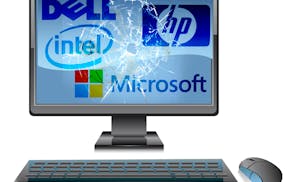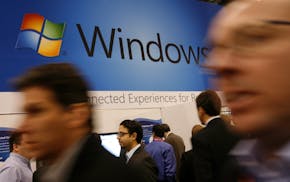Q: During basketball season I was trying to stream a game, but the action was jerky, as if something were slowing it down. I've been wondering where the bottleneck is.
My Internet service provider, Comcast, usually provides download speeds of about 25 megabits per second, fast enough for streaming. My Windows Vista PC has plenty of memory, including 3 gigabytes of RAM (random access memory) and a flash memory card, which supplements RAM by using Microsoft's ReadyBoost technology. I clear the cache memory in my Web browser to speed up downloads. What is slowing down my streaming?
Mark Stedman, Afton, Minn.
A: There are several possible causes. First, the ones you can do something about:
If anyone in your home was using the same Comcast Internet connection for streaming audio or video while you were, the streaming speed could have been reduced. Limit simultaneous use of the Internet.
If you're streaming over a Wi-Fi wireless network, you lose some of the speed delivered by your wired Internet connection. Either use a wired connection for streaming, or try to speed up your Wi-Fi by switching the modem-router to another channel, or frequency (see your owner's manual.) Switching channels can eliminate radio interference from neighboring Wi-Fi networks or other electronic devices, such as microwave ovens.
If your PC is used to play games over the Internet, it may have "hardware acceleration" turned on. Turning it off (for Windows Vista, see tinyurl.com/mewgj7w) will free up PC processing power and make streaming video play more smoothly.
Here are possible causes of a streaming slowdown that you can't fix:
Comcast's local network capacity is shared by its users, so during peak usage periods your streaming speed may be less than it normally is.
During high traffic periods on the Internet, data congestion can slow video delivery to your PC.
Q: When I try to install updates for my Adobe Reader software, I get the message "Error 1327. Invalid Drive: H:\mapped to a user folder." I can't try to solve the problem by uninstalling and reinstalling the Adobe program because it won't uninstall. What should I do?
Marie Berry, Chaska
A: An error in your PC's Registry, a database of Windows settings, is preventing the PC from finding Adobe Reader on its C drive. But changing the Registry is risky; any mistakes can cause more problems. Instead, have the PC substitute the correct drive, C, for the incorrect one, H.
If you're using Windows Vista, 7, 8 or 8.1, press the Windows logo key and the R key simultaneously. In the resulting box, type "cmd" (without quotation marks) and press the Enter key. In the next box, type "Subst H: C:" (without quotation marks) and press Enter. Close the box by clicking on the X in the upper right corner.
E-mail tech questions to steve.j.alexander@gmail.com or write to Tech Q&A, 650 3rd Av. S., Suite 1300, Minneapolis, MN 55488. Include name, city and telephone number.

Alexander: A beeping computer is telling you what's gone wrong inside

Alexander: How to stop deleted iPhone e-mails from coming back

Alexander: Refurbished PCs may need a BIOS update to use new components

Alexander: Windows 11 not always to blame for browser or e-mail problems


